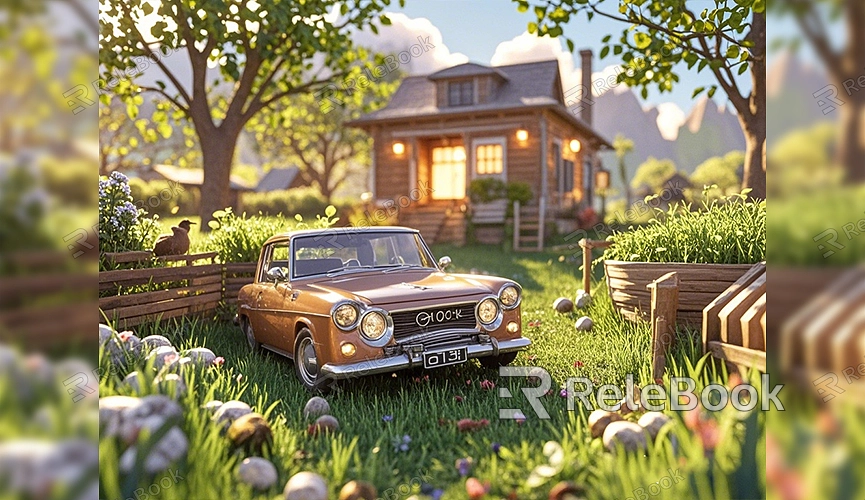How to render grass in blender
Rendering realistic grass in Blender not only adds a natural touch to your scenes but also enhances the overall realism and visual impact of your work. However, grass rendering involves several crucial steps, each of which can affect the final result. This guide will walk you through the entire process of creating a satisfying grass scene in Blender, covering everything from grass model creation, material application, and lighting setup to rendering optimization.

1. Creating and Selecting Grass Models
The first step in rendering grass is to choose an appropriate grass model. In Blender, you have two main ways to create grass: using the particle system or importing pre-made grass models.
- Particle System: This is a common method for generating grass in Blender. By adjusting the particle system settings, you can control the density, height, and bend of the grass. To enhance the natural feel, you can add a wind force field to simulate the effect of wind blowing through the grass.
- Importing Grass Models: If you need highly detailed grass or a specific type of grass for your scene, importing high-quality grass models is a good option. When using imported models, be mindful of the polygon count to avoid performance issues during rendering.
2. Applying Materials and Textures
Materials and textures are key to achieving realistic grass. Adding the right materials can enhance the realism of the grass and add depth to the scene.
- Base Color and Diffuse Map: Start by setting a realistic base color for the grass and combine it with a diffuse map to simulate color variations in the grass blades. Next, apply a normal map to add depth and texture to the grass.
- Detail Textures: In Blender, detail textures can help enhance the visual appeal of the grass by adding elements like dirt or dead grass, making the grass appear more natural. You can download high-quality textures from websites like Relebook to enrich your scene.
3. Lighting Setup and Environment Lighting
Lighting is another crucial factor in the grass rendering process. Proper lighting setup can make the grass look as natural as possible in your scene.
- Sun Lamp and Environment Lighting: The Sun Lamp is particularly effective in simulating outdoor lighting. You can adjust the intensity, color, and angle of the light to simulate sunlight at different times of day. Additionally, HDRI lighting can provide comprehensive lighting for the scene, giving the grass a more complex and realistic look.
- Shadows and Light Details: Setting up shadows is essential for enhancing the depth of the grass. By adjusting the softness and transparency of the shadows, you can better represent the delicate texture of the grass blades. Furthermore, using Global Illumination and Ambient Occlusion can add layers to the light and shadow effects, making the entire scene more dynamic.

4. Rendering Settings and Performance Optimization
To render high-quality grass in Blender, optimizing your rendering settings is the final crucial step.
- Sampling and Anti-Aliasing: Increasing the sample count in the render settings can effectively reduce noise, improving the detail of the grass. Anti-Aliasing can smooth the edges of the grass, preventing jagged edges from appearing.
- Render Time and Resource Allocation: Grass scenes typically require longer render times, so it’s important to allocate computing resources wisely. Consider using Blender’s distributed rendering feature to spread the render task across multiple nodes, speeding up the process. Additionally, you can further optimize render times by reducing non-essential settings, such as limiting the use of Subsurface Scattering.
5. Post-Processing and Fine-Tuning
After rendering, you can use Blender’s post-processing tools to fine-tune the grass scene for the best results. Steps like color correction, contrast adjustment, and detail enhancement can make the grass look even more realistic. If you need high-quality 3D textures and HDRIs for your models and virtual scenes, you can download them for free from [Relebook](https://textures.relebook.com). If you’re looking for premium 3D models, [Relebook](https://3dmodels.relebook.com) offers a wide range of high-quality 3D resources.
Rendering grass in Blender is a complex and challenging process that involves multiple steps, from model creation and material application to lighting setup and rendering optimization. With the right settings and continuous adjustments, you can achieve realistic grass effects, adding a touch of natural beauty to your projects. I hope this guide helps you become more proficient in grass rendering techniques in Blender, allowing you to create more vibrant virtual scenes.

